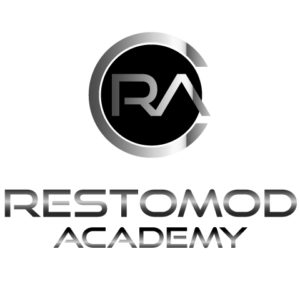The cost and processes associated with modernizing and restoring a classic can be terrifying to even the most dedicated hobbyists. There are television shows and other forms of media that portray restomods having prices upwards of $400,000. But what does it cost the average individual to build a restomod? I decided to find out.
What does it cost to build a restomod? The cost to build a restomod varies but is generally between $90,000-140,000. For this build cost, we assume the classic car project started out in very poor condition and the following areas will be completely restored and modernized: interior, exterior, suspension, brakes, engine, fuel system, electrical, and exhaust system.
Body Improvement Costs
Several factors related to the body will factor into what it costs to build a restomod, such as vehicle size, rust, and the amount of chrome. How much paint is on the car, the quality required for the car, the quality of restoration requested, and whether the car has previously been restored?
The vehicle size is going to make a difference as larger vehicles obviously cost more than the smaller ones. (e.q. more surface area to prep, repair, paint, etc…)
How Much Rust?
Rust is a significant expense for automobiles. And, it’s not appropriate to convert a number-matching restored vehicle into a restomod. As a result, more than likely, the vehicle will have a lot of rust which requires the most labor-intensive and therefore costly expenses.





When looking at your car, you can classify the amount of rust into the following categories:
| Signs of Rust | Cost to Repair |
| Rust holes larger than a quarter | Least Expensive |
| Rust holes more than 10 quarters | Middle of the Road Costs |
| Sections of the car or missing panels | Most Expensive |
Again, for the cost to build a restomod, I assumed a major amount of rust. Disregarding any personal bias, the popularity of a vehicle may affect the price due to part availability and the quality of available parts.
Chrome plating pricing varies based on the vehicle’s condition and the number of chromed parts.
Condition of Paint?
Media-blast existing paint. The more paint there is, the more labor (read: cost) it takes to remove it.
Restomod service is another painting consideration. However, the cost to paint your car can be classified into the following categories:
| Quality of Paint Job | Price |
| Daily Driver | Least Expensive |
| Local Car Shows | Middle of the Road Cost |
| World Class Paint Job for Rare Auto | Most Expensive |
Previous Restoration?
For the price estimation, I assumed a local car show quality of paint job.
The quality and totality of the previous restoration vary greatly and definitely impact price. Regardless, there’s still a reason it needs to be restored. So, rarely does a previous restoration reduce the cost of building a restomod.
Generally speaking, there are two types of restoration:
- Frame On – The restorer will redo the body, paint, motor, interior, and trunk. In most cases, only the parts that need attention will be replaced.
- Frame Off – The restorer will remove the entire body from the vehicle, inspect the frame, and refurbish or replace all of the pieces before repainting them. Because most components will be freshly painted or powder coated, it’s extremely simple to identify a frame-off repair.
Controversy?
Restomod builders are increasingly buying vehicles fresh from frame-off restorations. In this scenario, the body and paint job are of a least a local car show quality. However, restomod builders buy frame-off restored vehicles.
Mechanical Improvement Costs – What Does It Cost to Build A Restomod?
Several factors related to the mechanical condition of the car will factor into the cost to build it such as the costs to upgrade the engine, transmission, suspension, brakes, air or heating system, and power steering.
Simple engine swaps aren’t restomods. Price-wise, we assume a modern/newer engine. In most cases, this will include ordering a crate motor. On the other hand, budget-conscious builders may choose to buy a used corvette LS engine with low mileage from a junkyard. Nevertheless, from a financial standpoint, a contemporary engine’s being fitted.
Engine Swap Anyone?
Since you are installing a new engine, the transmission will need an upgrade. And, new performance-based engine installs in a car will usually be accompanied by a manual transmission. On the other hand, many restomod trucks with new performance-based engines have automatics.
The reason is simply a result of the location of a stick shift in a truck. For the most part, the price of an automatic or manual transmission is fairly close to the same. However, user preferences vary greatly with respect to installing a manual or automatic transmission.
The suspension is an important aspect of the build. Many people are choosing to lower the suspension which certainly adds a “wow” factor to the vehicle. However, since the spirit of our build is to restore and modernize a classic car, we will upgrade the suspension to a normal height. In addition, to handle the new power, many suspension components will need to be replaced.
Safety, Safety, Safety – What Does It Cost to Build A Restomod?
Brakes are arguably the most important part of any vehicle and a restomod is no different. Most cars today have front disc brakes and rear drum brakes while others have disc brakes. There are pros and cons of each however, given our high-performance engine the concern is that drum brakes may experience brake fading and wear over time.
The end result of this would be the car pulling to one side. So, for cost estimation, we assume the installation of a complete disc brake system which will stop the vehicle faster and make the car safer to drive.
Many classic car buyers like to keep the car original which usually means no air conditioning. However, not this build though, as we’ve factored the cost of an air conditioning and heating upgrade into the build.
Classic cars typically don’t weigh all that much so steering them isn’t all that difficult. However, adding power steering does make it easier to turn and more enjoyable to drive on a daily basis. As a result, we’ve factored this upgrade into the cost.
Finishing Touches & Cost Considerations
The interior, suspension, security system, integrated roll cage, power windows/locks, and audio system are all finishing touches that will factor into the build costs.
The inside of the car won’t use exotic leather or cost extra. Moreover, many people build vehicles and fall down at the finish line and this will not be that build.
Air ride suspensions are becoming quite popular. However, their ongoing maintenance expense and complication of them may outweigh their utility. These costs aren’t included in construction costs.
Daily Driver
As the car will be a daily driver, a security system will be installed though it will be basic and like one typically found in a newer vehicle.
An integrated roll cage has not been factored into the build cost. Usually, roll cages are installed in cars approaching or surpassing 1,000 horsepower (hp) but that’s not the case with this build. Rather, the newer engine will be high performance but will achieve somewhere between 400-500 hp. Enough performance to be sporty but efficient enough for everyday driving.
Most newer vehicles come standard with power windows and locks.

Lastly, the audio system will be upgraded. Many newer vehicles have extremely capable audio and video systems. However, the approach for this build is to have a head unit that has modern conveniences like GPS and cellular phone integration for hands-free driving. The stealthier installation uses stock speaker locations. Door panels will hide the speakers. One subwoofer will be located in the back to round out the system and provide for an enjoyable audio experience.
Related Questions:
It costs $50,000-$70,000 to restomod a car. There are two components to a restomod, the restoration itself and the modifications. Depending the level of restoration you choose, who do the work, and which modifications you make will all affect cost.
The value or worth of a restomod varies. Assuming the classic car has a quality restoration, the only variables left to determine worth is how rare the car is and how many and what type of modifications have been. Without taking rarity into account, the amount a restomod is worth varies but is generally between $50,000 -$75,000 for an entry-level restomod, $150,000-$200,000 for a mid-grade restomod, while a completely custom restomod can be worth over $500,000.
Rarity is another factor used to determine worth. Simply put, there are so many variables to subjectively give the “worth” of a rare restomod, let alone one with any level of professional modification/customization. However, it’s more than safe to say the worth of a professionally built restomod easily soars well over $1,000,0000.
A restomod is a classic car that has been restored and modified. Not surprisingly, the term restomod raises plenty of questions and opinions about classic cars, restorations, and modifications. In a nutshell, a restomod is a combination of the words “restored” and “modified” and is a seamless combination of both the old and new.



